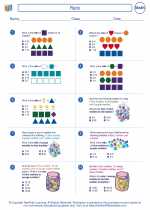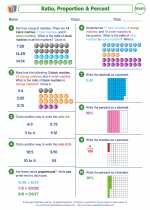Condensation
Condensation is the process by which a gas changes into a liquid. This happens when the particles of a gas lose energy and come close enough together to form a liquid. It is the opposite of evaporation, which is when a liquid changes into a gas.
Factors affecting condensation
- Temperature: Condensation occurs when the temperature of a gas decreases, causing the particles to slow down and come closer together.
- Humidity: High humidity levels in the air increase the likelihood of condensation, as there is more water vapor present for condensation to occur.
- Surface area: Condensation is more likely to occur on surfaces that are cooler than the surrounding air, as the temperature difference promotes the transfer of energy from the gas to the surface, causing it to condense.
Examples of condensation
Condensation can be observed in various everyday situations:
- Droplets of water forming on the outside of a cold drink on a hot day
- Cloud formation in the sky as water vapor condenses into water droplets
- Fog appearing when warm, moist air comes into contact with a cooler surface
Study guide
Here are some key points to remember about condensation:
- Condensation is the process by which a gas changes into a liquid.
- Factors affecting condensation include temperature, humidity, and surface area.
- Examples of condensation can be observed in everyday situations such as cloud formation and droplets forming on a cold surface.
Understanding condensation is important in various scientific fields and for understanding natural phenomena such as the water cycle. It is also relevant for practical applications such as in refrigeration and climate control.
.◂Math Worksheets and Study Guides Fifth Grade. Ratio
Study Guide Ratio
Ratio  Activity Lesson
Activity Lesson Probability Spinner
Probability Spinner  Activity Lesson
Activity Lesson Easy Money
Easy Money  Worksheet/Answer key
Worksheet/Answer key Ratio
Ratio  Worksheet/Answer key
Worksheet/Answer key Ratio
Ratio  Worksheet/Answer key
Worksheet/Answer key Ratio
Ratio  Worksheet/Answer key
Worksheet/Answer key Ratio
Ratio  Worksheet/Answer key
Worksheet/Answer key Ratio
Ratio  Worksheet/Answer key
Worksheet/Answer key Ratio
Ratio  Worksheet/Answer key
Worksheet/Answer key Ratio, Proportions and Percent
Ratio, Proportions and Percent  Worksheet/Answer key
Worksheet/Answer key Money Ratios
Money Ratios  Worksheet/Answer key
Worksheet/Answer key Animal Ratios
Animal Ratios  Vocabulary/Answer key
Vocabulary/Answer key Ratio
Ratio 

 Activity Lesson
Activity Lesson
 Activity Lesson
Activity Lesson
 Worksheet/Answer key
Worksheet/Answer key
 Worksheet/Answer key
Worksheet/Answer key
 Worksheet/Answer key
Worksheet/Answer key
 Worksheet/Answer key
Worksheet/Answer key
 Worksheet/Answer key
Worksheet/Answer key
 Worksheet/Answer key
Worksheet/Answer key
 Worksheet/Answer key
Worksheet/Answer key
 Worksheet/Answer key
Worksheet/Answer key
 Worksheet/Answer key
Worksheet/Answer key
 Vocabulary/Answer key
Vocabulary/Answer key

The resources above cover the following skills:
Algebra (NCTM)
Use mathematical models to represent and understand quantitative relationships.
Model problem situations with objects and use representations such as graphs, tables, and equations to draw conclusions.